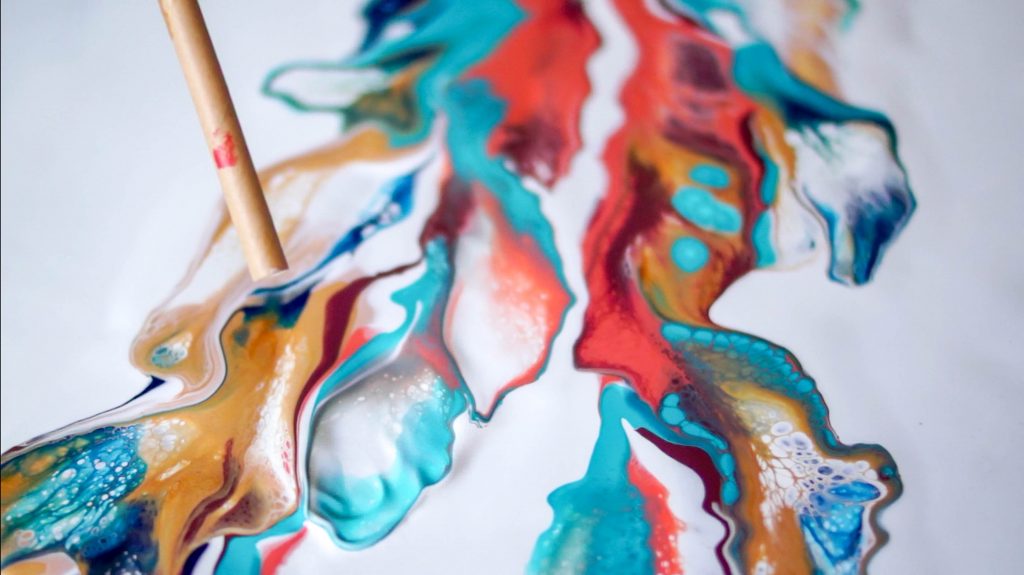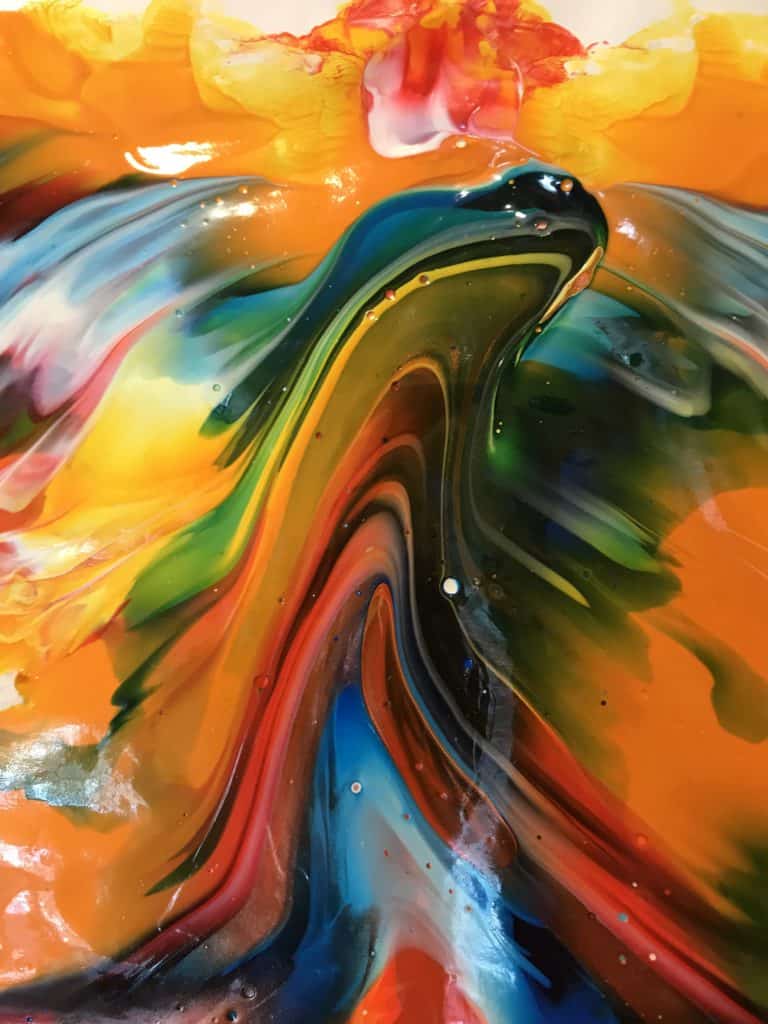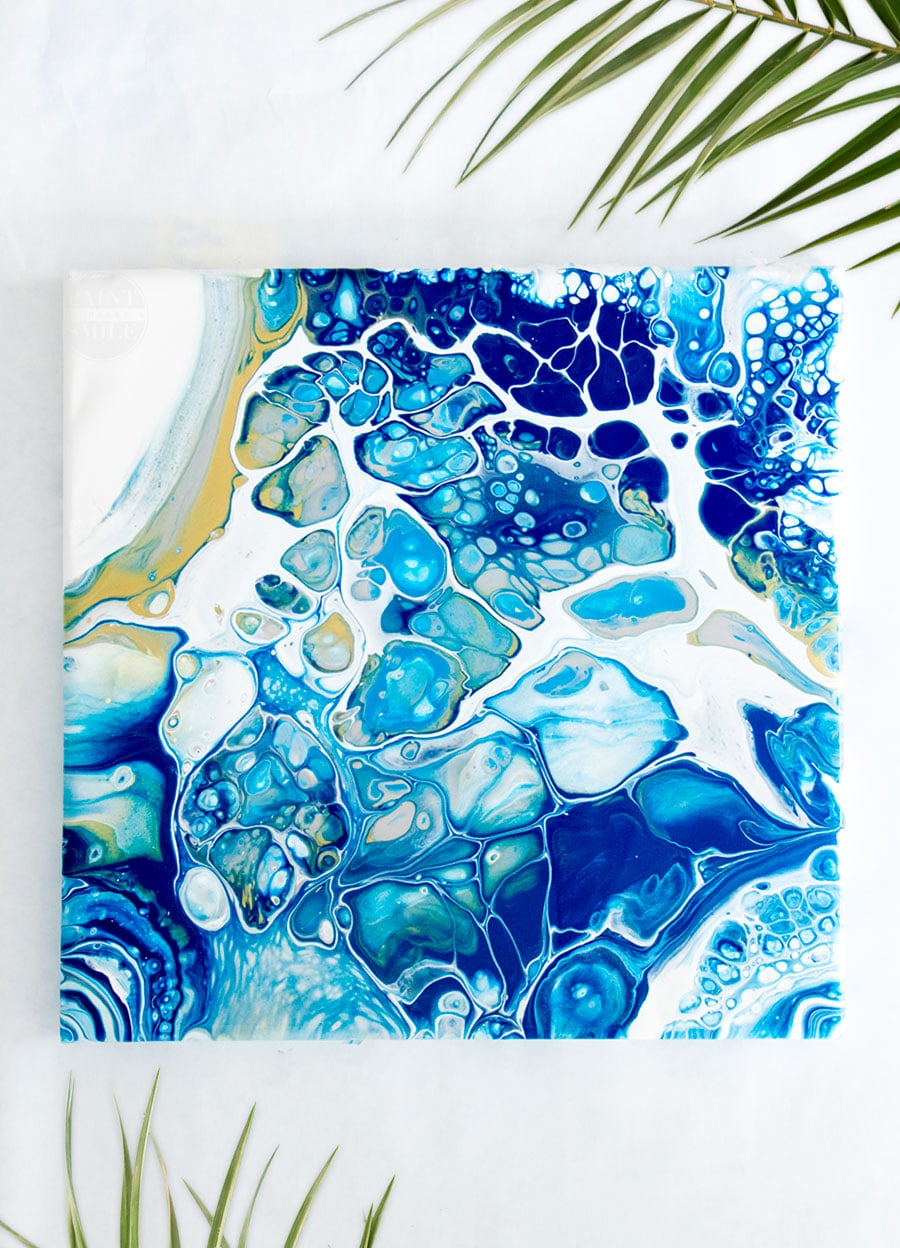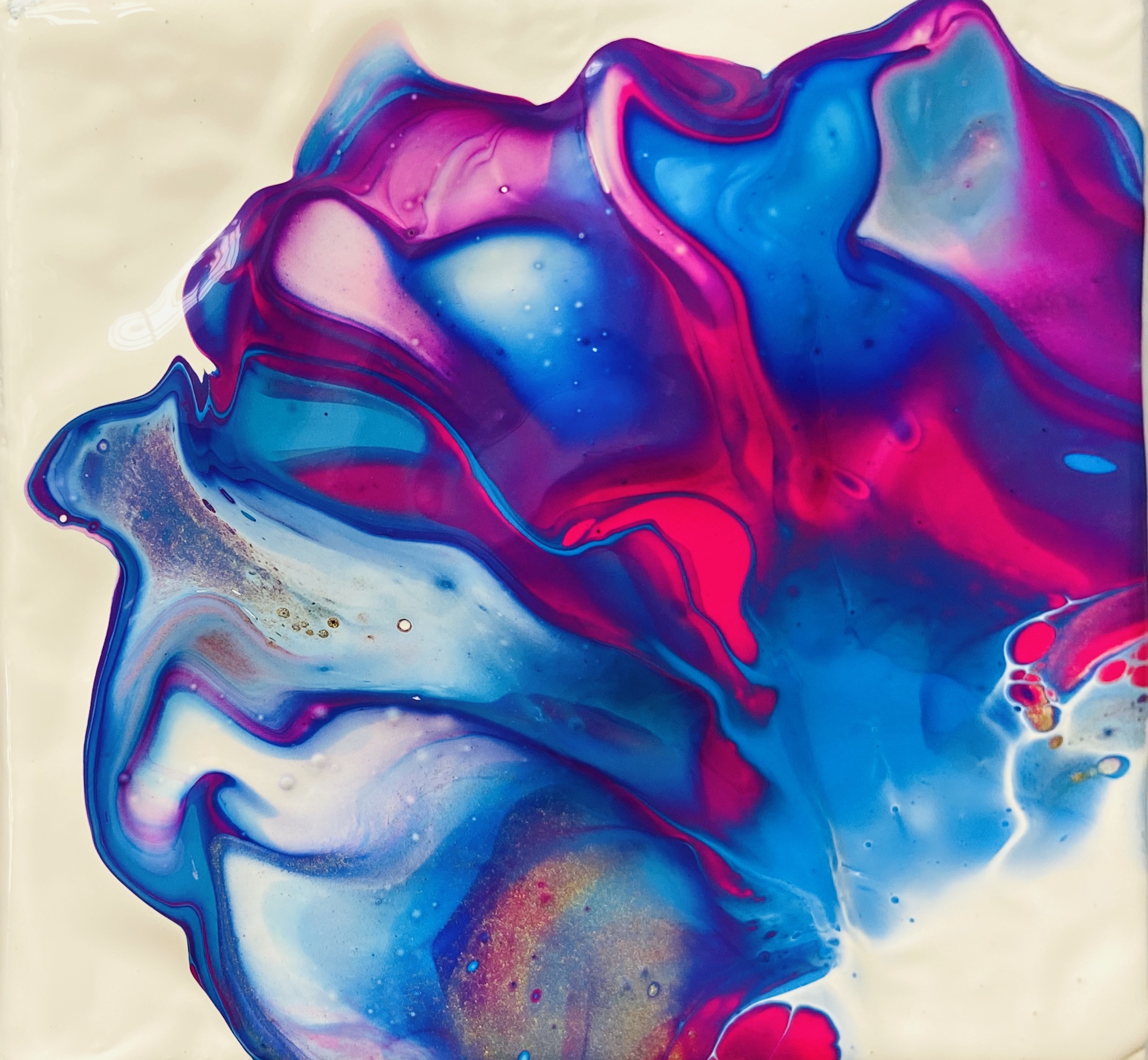Pour Painting. Then, pour each color into the cup a little at a time. Abstraction and a love for the mixing and mingling of colors really sits at the heart of pour painting, and the dance that each color performs on the artist's desired surface is.

The term 'pour painting' is in reference to the paint being poured onto the canvas. Without any ifs or buts, the colors are the top priority when it comes to the materials for acrylic pours. First, you'll need to mix your paint solutions.
An acrylic pour painting is very different from most other types of artwork, and to master it, you need to learn about acrylic pouring first. Pour Painting - Why Everyone is Doing It. Every painting is unique and thus you do not even need a brush!
There are several methods of pouring that will give differing results. 'dirty cup' or 'Flip cup' - This is when the paints are all added into one cup then the cup is flipped and lifted. 'Tree ring pour' - The paints are all added into one cup and poured in slow circular motion in the middle of the puddle using a. Usually, acrylic colors are made to flow into each other to give rise to the unique color effects and patterns that you will. Then, pour each color into the cup a little at a time.
Below is my complete pour painting supply list.
These paint mixtures are what you'll use to create your pour paintings.
Usually, acrylic colors are made to flow into each other to give rise to the unique color effects and patterns that you will. This technique naturally blends the colors, and works very well for tri-color rainbow pours (magenta, yellow, and cyan), since the blending can create new colors. The term 'pour painting' is in reference to the paint being poured onto the canvas.
Diana suggests grabbing a cookie cooling rack, foil, acrylic paints, and cups. You can use pour mediums to thin the paint, but they are not necessary. Also, there are products that help create cells.
Put your rubber gloves on to keep your fingers safe from paint stains. Basically, you need to mix a "pouring medium" with acrylic paints. This was a tip we got from a friend who introduced to pour.
The cup flip method has become a viral sensation in the last few years, for its dramatic presentation as much as the dazzling effects it creates! Also, there are products that help create cells. An acrylic pour painting is very different from most other types of artwork, and to master it, you need to learn about acrylic pouring first.
When acrylic paints and a "pouring medium" is used, paints can be simply poured onto the canvas using various methods. Pour a full pipette of acrylic ink color you like. You do not need silicone here..
This technique naturally blends the colors, and works very well for tri-color rainbow pours (magenta, yellow, and cyan), since the blending can create new colors.
The Best Pour Painting Tips Supplies for Pour Painting Rocks.
Acrylic pour painting is a painting technique where fluid acrylic paints are poured over the canvas. For things not found around the house you can grab pour painting supplies here. The support can be any flat, concave surface that is flat enough to let the paints run smoothly over it.
Leave the edges of the canvas (sides) uncovered so the paint can drip down and cover these. Without any ifs or buts, the colors are the top priority when it comes to the materials for acrylic pours. Painter's tape won't damage the canvas and can be peeled off once the painting is dry.
You do not need silicone here.. Acrylic pouring involves making acrylic paint pourable using a medium and then applying it on a surface to create abstract art. Work in a pattern with the other colors.
An acrylic pour painting is very different from most other types of artwork, and to master it, you need to learn about acrylic pouring first. First, you'll need to mix your paint solutions. This is a good starting point for beginners.
Pour all the colors into a cup in small amounts. The cup flip method has become a viral sensation in the last few years, for its dramatic presentation as much as the dazzling effects it creates! Painter's tape won't damage the canvas and can be peeled off once the painting is dry.
Beautiful Shades of Blue and Gold Abstract Fluid Art Acrylic Pour Ocean Inspired Painting.
The results are a very organic colorful abstract art piece that is reminiscent of the most striking elements in nature.
Diana suggests grabbing a cookie cooling rack, foil, acrylic paints, and cups. A puddle pour uses a dirty cup to create a puddle of paint in the middle of a surface that can then be manipulated either by moving the canvas/surface or using air to manipulate it. When filling the cup up with paint only fill the cup about ¼ of the way.
This was a tip we got from a friend who introduced to pour. An acrylic pour painting is very different from most other types of artwork, and to master it, you need to learn about acrylic pouring first. Pour Painting - Why Everyone is Doing It.
For things not found around the house you can grab pour painting supplies here. The support can be any flat, concave surface that is flat enough to let the paints run smoothly over it. The term 'pour painting' is in reference to the paint being poured onto the canvas.
Once everything is set up and ready to use start getting the paint ready to use.
Start by adding paint to the cup just like in the first method.
Put a piece of aluminum foil flat against the canvas and use tape to secure it. Diana suggests grabbing a cookie cooling rack, foil, acrylic paints, and cups. Take the first color and just cover the bottom of the cup.
A simple pouring technique where even beginners can achieve beautiful results. If the canvas is small enough, you can place it face down on top of the cup as you see here. While paint pour is simple to create and understand, there are many different techniques to try to create different fl owing patterns.
While paint pour is simple to create and understand, there are many different techniques to try to create different fl owing patterns. Then, pour each color into the cup a little at a time. Different types of materials can be used to support the painting ideas: dried mud, pebbles, crushed terracotta or painted rocks.
Fill a cup with layers of fluid paint, then lay your canvas or board over the mouth of the cup. To get the paint ready, take all the desired colors and pour each of them in a separate plastic cup. Usually, acrylic colors are made to flow into each other to give rise to the unique color effects and patterns that you will.





















